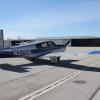Flaps on take-off?
-
Members Online
- Tito22
- Andy95W
- DonMuncy
- swish
- 00-Negative
- 7.Mooney.Driver.0
- Danb
- 47U
- exM20K
- TCC
- Hank
- tperkins92
- ta2too
- Jeff Dennerline
- 2eskies
- TaildraggerPilot
- GaryP1007
- Scott Ashton
- TangoTango
- anthonydesmet
- Jake@BevanAviation
- 201Mooniac
- pkellercfii
- pirate
- VLAB_superroach
- BDPetersen
- Justin Schmidt
- MikeOH
- Raistlin
- Kirch56H
- pgray
- mooniac58
- hnorber
- airwheels
- M20F
- Bolter
- clh


Recommended Posts
Join the conversation
You can post now and register later. If you have an account, sign in now to post with your account.